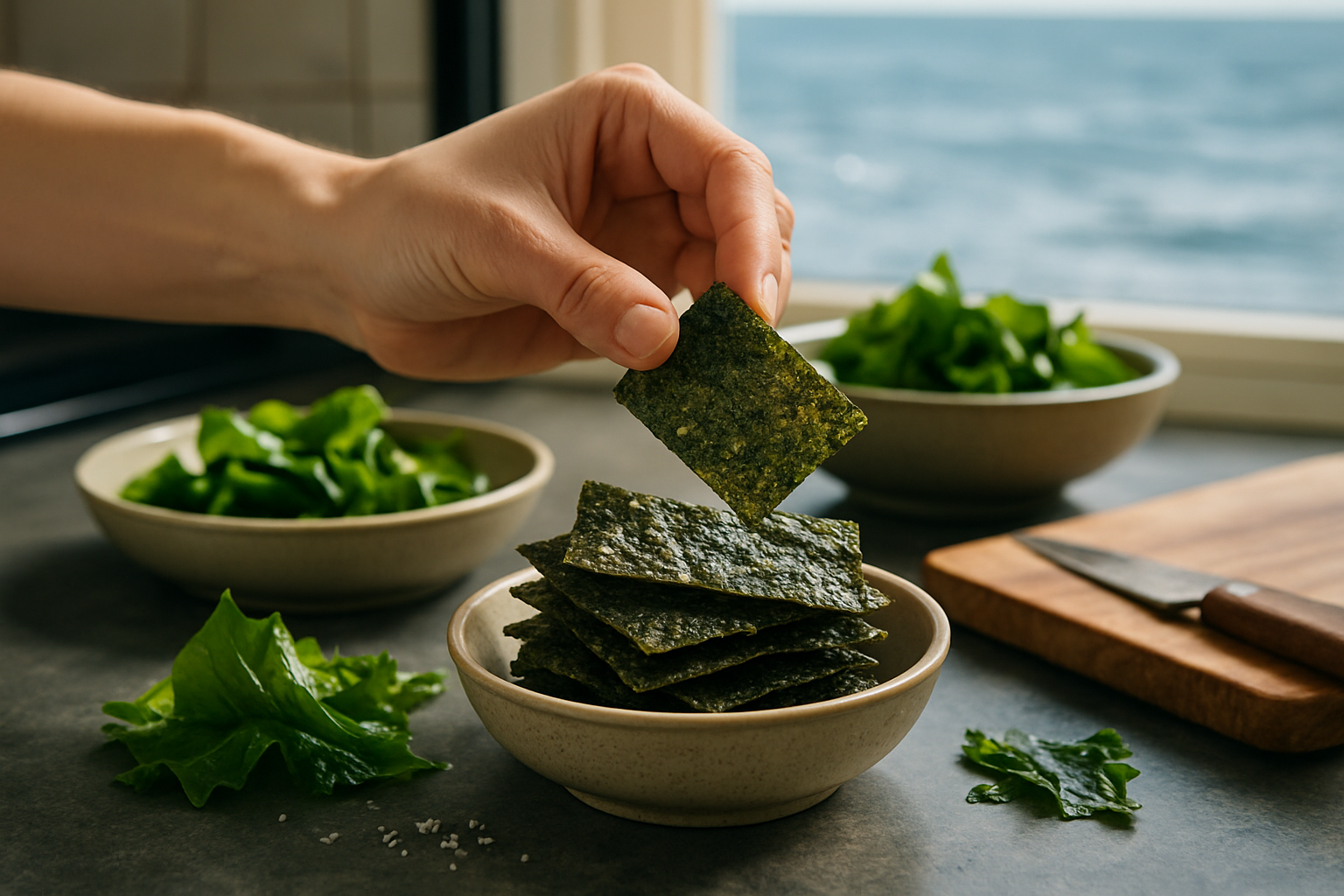Savory Seaweed Snacks: The Ocean's Umami Superfood
Dive into the depths of flavor with seaweed, the ocean's umami-packed superfood that's making waves in kitchens worldwide. From crispy nori chips to hearty kelp noodles, these versatile marine greens are redefining snack time and elevating culinary experiences. Join us as we explore the savory world of seaweed and discover why this nutrient-rich ingredient is becoming a must-have in every food lover's pantry.

The appeal of seaweed lies in its umami-rich flavor, which adds depth and complexity to any dish. This savory taste, often described as the fifth basic taste alongside sweet, sour, salty, and bitter, is what gives seaweed its addictive quality. Moreover, seaweed is packed with essential vitamins, minerals, and antioxidants, making it a nutritional powerhouse. With its low calorie content and high fiber, it’s no wonder that seaweed snacks are gaining popularity among health-conscious foodies and adventurous eaters alike.
Crispy Nori: The New Chip on the Block
Move over potato chips, there’s a new crispy contender in town. Nori, the seaweed commonly used to wrap sushi, has been transformed into a crunchy, satisfying snack that’s taking the health food world by storm. These paper-thin sheets of roasted seaweed are typically seasoned with salt and other flavorings, creating a light yet savory snack that’s perfect for on-the-go munching. The beauty of nori chips lies in their versatility – they can be enjoyed on their own, used as a garnish for soups and salads, or even as a creative wrap for sandwiches and rice balls.
What sets nori chips apart from traditional snacks is their impressive nutritional profile. Packed with vitamins A, B, C, and E, as well as minerals like iodine and iron, these crispy treats offer a guilt-free way to satisfy cravings. The low calorie count and high fiber content make them an excellent choice for those watching their weight or looking to improve their diet. As consumers become more health-conscious, nori chips are positioned to become a staple in pantries worldwide, offering a tasty alternative to less nutritious snack options.
Kelp Noodles: A Low-Carb Pasta Alternative
For those seeking a lighter alternative to traditional pasta, kelp noodles are making a splash in the culinary world. Made from the inner part of kelp seaweed, these translucent noodles have a neutral flavor and a slightly crunchy texture that softens when soaked. With virtually zero calories and carbohydrates, kelp noodles are a dream come true for anyone following a low-carb or ketogenic diet. Their versatility allows them to be used in a wide range of dishes, from cold salads to hot stir-fries, absorbing the flavors of whatever sauce or seasoning they’re paired with.
Beyond their appeal to dieters, kelp noodles offer significant nutritional benefits. Rich in minerals like calcium, iron, and potassium, they provide a nutritional boost to any meal. Their high iodine content supports thyroid function, while their natural alginate may aid in digestion and promote feelings of fullness. As more people discover the wonders of kelp noodles, innovative chefs and home cooks are finding creative ways to incorporate them into both traditional and fusion cuisines, opening up a world of possibilities for those looking to expand their culinary horizons.
Seaweed Seasonings: Umami in a Sprinkle
The intense umami flavor of seaweed makes it an ideal seasoning for a variety of dishes. Dried and ground into a fine powder, seaweed can be sprinkled over everything from popcorn to roasted vegetables, adding a savory depth that enhances the overall taste profile. Furikake, a Japanese seasoning blend that often includes nori, sesame seeds, and dried fish, has gained popularity as a versatile condiment that can elevate even the simplest of meals. As consumers become more adventurous with their seasonings, seaweed-based blends are finding their way onto spice racks around the world.
One of the most exciting developments in seaweed seasonings is their use as a salt alternative. With many people looking to reduce their sodium intake, seaweed offers a flavorful solution that doesn’t compromise on taste. The natural saltiness of seaweed, combined with its rich mineral content, makes it an excellent substitute for table salt in many recipes. From seaweed salt blends to umami-packed seasoning shakers, these innovative products are helping home cooks and professional chefs alike to create healthier, more flavorful dishes without relying on excessive salt.
The Future of Seaweed Snacks: Innovation and Sustainability
As the popularity of seaweed snacks continues to grow, so does the innovation in this space. Food scientists and culinary experts are exploring new ways to incorporate seaweed into familiar snack formats, resulting in products like seaweed-infused crackers, protein bars, and even ice cream. The subtle oceanic flavor of seaweed pairs surprisingly well with a variety of ingredients, opening up endless possibilities for new and exciting snack creations.
Beyond its culinary applications, seaweed is gaining attention for its sustainability. As a fast-growing, low-impact crop that requires no fresh water or land to cultivate, seaweed is being hailed as a potential solution to some of the world’s food security and environmental challenges. Seaweed farming can help sequester carbon, reduce ocean acidification, and provide a sustainable source of nutrition for a growing global population. As consumers become more environmentally conscious, the appeal of seaweed as a sustainable food source is likely to increase, driving further innovation in the seaweed snack industry.
Seaweed Snack Tips & Facts
• Store dried seaweed snacks in an airtight container to maintain crispness
• Experiment with different seaweed varieties to find your favorite flavor profile
• Kelp noodles can be eaten raw or lightly cooked for different textures
• Seaweed is one of the few plant-based sources of vitamin B12
• Nori sheets can be used as a low-carb alternative to tortillas for wraps
• Wakame, a type of seaweed, can expand up to 10 times its dried size when rehydrated
• Seaweed farming requires no fertilizers or freshwater, making it highly sustainable
• The global seaweed market is projected to reach $9.1 billion by 2024
• Some seaweed species can grow up to two feet per day
• Seaweed has been used in traditional medicine for centuries to treat various ailments
As we ride the wave of culinary innovation, seaweed snacks stand out as a beacon of flavor, nutrition, and sustainability. From crispy nori chips to umami-packed seasonings, these ocean-derived treats are transforming the way we think about snacking and cooking. As more people discover the delicious potential of seaweed, we can expect to see even more creative and exciting products hitting the shelves. So why not dive in and explore the savory world of seaweed snacks? Your taste buds – and the planet – will thank you.





